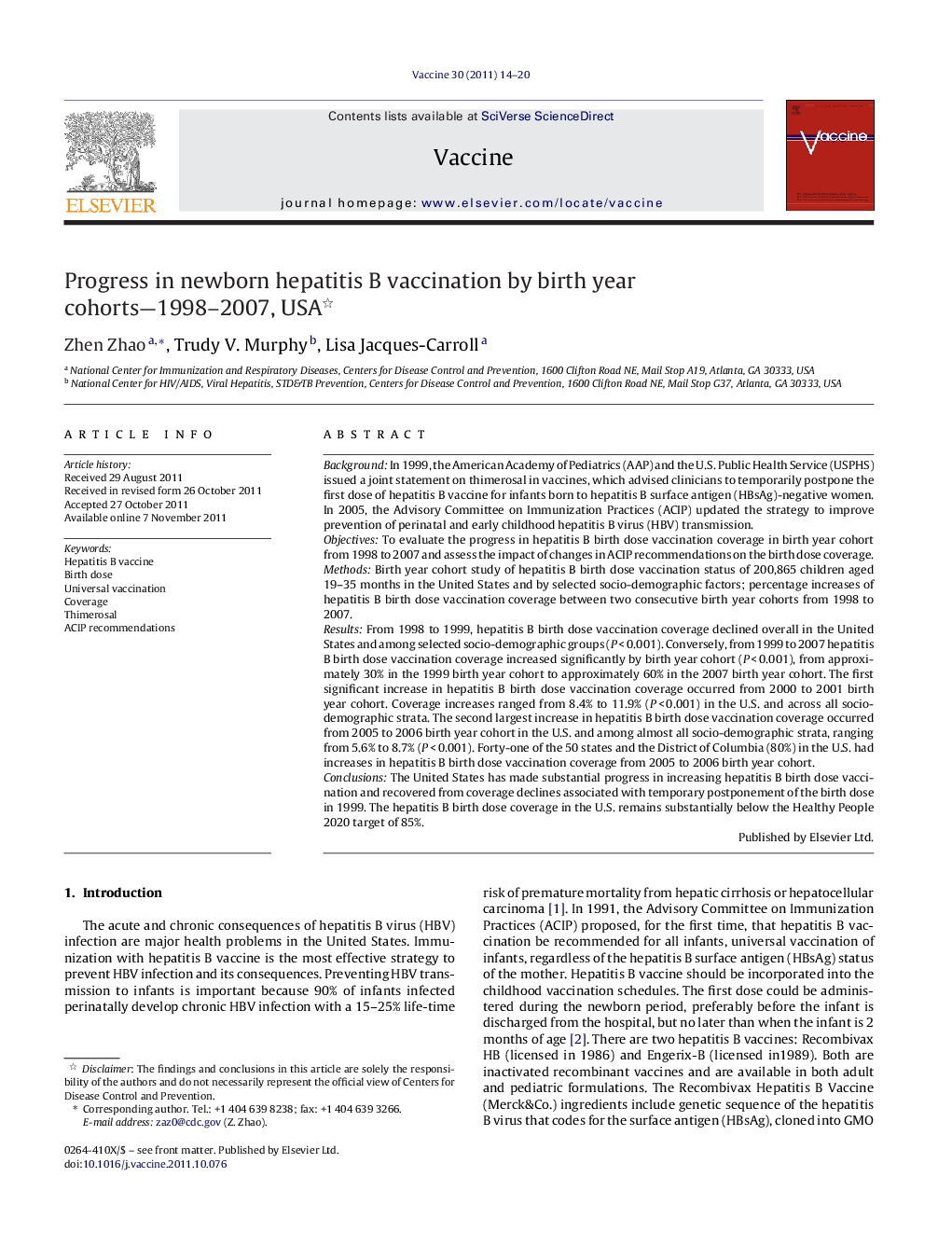| کد مقاله | کد نشریه | سال انتشار | مقاله انگلیسی | نسخه تمام متن |
|---|---|---|---|---|
| 2402854 | 1102861 | 2011 | 7 صفحه PDF | دانلود رایگان |

BackgroundIn 1999, the American Academy of Pediatrics (AAP) and the U.S. Public Health Service (USPHS) issued a joint statement on thimerosal in vaccines, which advised clinicians to temporarily postpone the first dose of hepatitis B vaccine for infants born to hepatitis B surface antigen (HBsAg)-negative women. In 2005, the Advisory Committee on Immunization Practices (ACIP) updated the strategy to improve prevention of perinatal and early childhood hepatitis B virus (HBV) transmission.ObjectivesTo evaluate the progress in hepatitis B birth dose vaccination coverage in birth year cohort from 1998 to 2007 and assess the impact of changes in ACIP recommendations on the birth dose coverage.MethodsBirth year cohort study of hepatitis B birth dose vaccination status of 200,865 children aged 19–35 months in the United States and by selected socio-demographic factors; percentage increases of hepatitis B birth dose vaccination coverage between two consecutive birth year cohorts from 1998 to 2007.ResultsFrom 1998 to 1999, hepatitis B birth dose vaccination coverage declined overall in the United States and among selected socio-demographic groups (P < 0.001). Conversely, from 1999 to 2007 hepatitis B birth dose vaccination coverage increased significantly by birth year cohort (P < 0.001), from approximately 30% in the 1999 birth year cohort to approximately 60% in the 2007 birth year cohort. The first significant increase in hepatitis B birth dose vaccination coverage occurred from 2000 to 2001 birth year cohort. Coverage increases ranged from 8.4% to 11.9% (P < 0.001) in the U.S. and across all socio-demographic strata. The second largest increase in hepatitis B birth dose vaccination coverage occurred from 2005 to 2006 birth year cohort in the U.S. and among almost all socio-demographic strata, ranging from 5.6% to 8.7% (P < 0.001). Forty-one of the 50 states and the District of Columbia (80%) in the U.S. had increases in hepatitis B birth dose vaccination coverage from 2005 to 2006 birth year cohort.ConclusionsThe United States has made substantial progress in increasing hepatitis B birth dose vaccination and recovered from coverage declines associated with temporary postponement of the birth dose in 1999. The hepatitis B birth dose coverage in the U.S. remains substantially below the Healthy People 2020 target of 85%.
► The U.S. has made substantial progress in increasing HepB birth dose vaccination.
► The U.S. has recovered from HepB birth dose coverage declines due to concern about thimerosal in vaccines.
► The HepB birth dose coverage remains substantially below the 2020 target of 85%.
► Further efforts are needed to maintain the increasing trend in HepB birth dose vaccination.
Journal: Vaccine - Volume 30, Issue 1, 9 December 2011, Pages 14–20